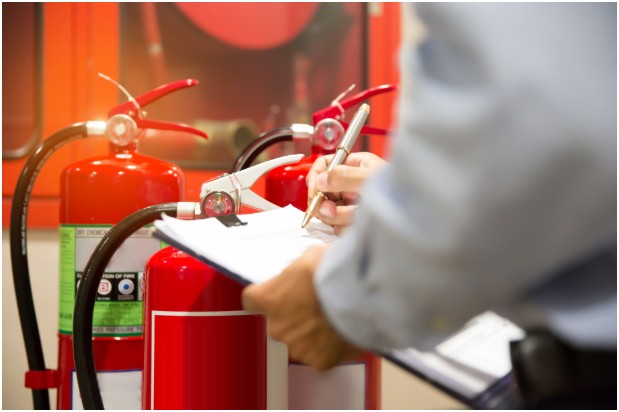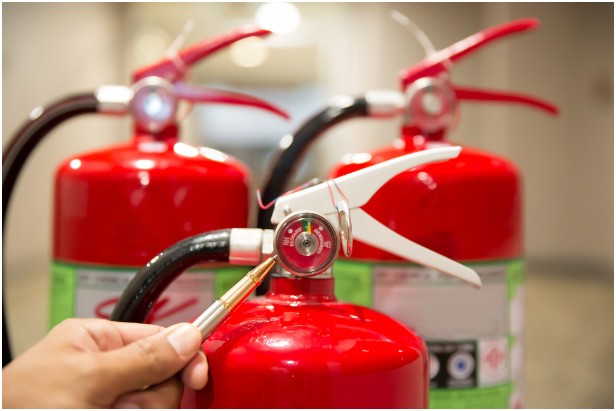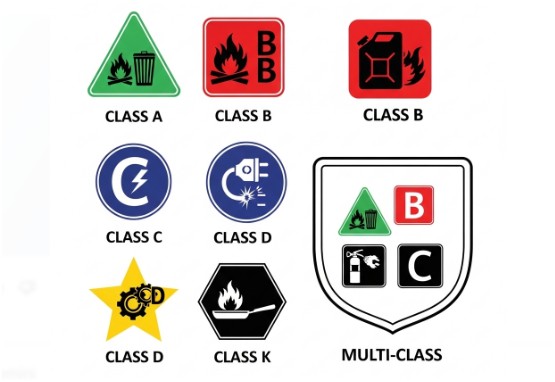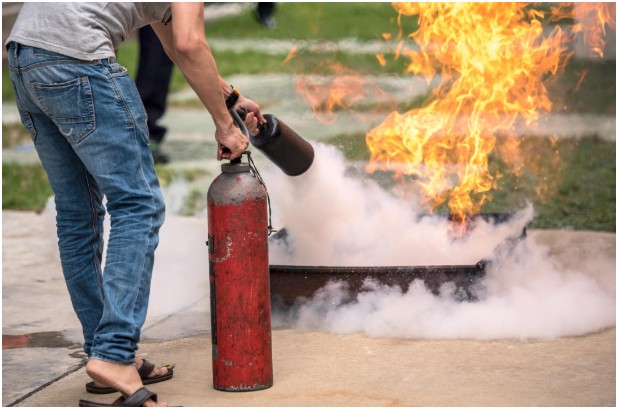Ever Tried Fighting Fire With the Wrong Tool? I Have—Don’t Be Me.
About five years ago, during a minor (but smoky) kitchen mishap involving my toaster and a rogue Pop-Tart, I learned a lesson that’s stuck with me ever since: what do the symbols on a fire extinguisher indicate?
At the time, I grabbed the nearest extinguisher and sprayed it like I was a TV firefighter. It worked… sort of. Turns out, I used the wrong type for an electrical fire—and cleaning up the aftermath was a whole other disaster.
Back then, I didn’t even notice the little icons on the label. I thought a fire extinguisher was a one-size-fits-all kind of deal. Spoiler: it’s not. And once you know what those symbols actually mean, you’ll never look at a red canister the same way again.
So, grab your mental notepad—we’re about to decode the fire safety cheat sheet that’s been right in front of your face this whole time.
What Do the Symbols on a Fire Extinguisher Indicate?

At a glance, the small symbols on a fire extinguisher may appear to be decorative stickers, but each one plays a crucial role. What do the symbols on a fire extinguisher indicate?
In short, they tell you what type of fire the extinguisher is designed to fight—and just as importantly, what it shouldn’t be used on.
Each extinguisher class has a unique icon, typically shaped like a square or triangle, often featuring images such as a trash can, flame, or electrical plug. These aren’t just cute graphics—they’re the fastest way to know what you’re dealing with in a pinch.
Here’s a quick cheat sheet (don’t worry, there’s a full breakdown coming up):
| Class | Symbol | Used For |
| A | 🔺 Trash/Wood Icon | Ordinary combustibles like paper, wood, fabric |
| B | 🔲 Gas Can Icon | Flammable liquids like gasoline, oil |
| C | 🔲 Plug/Electrical Icon | Electrical equipment fires |
| D | 🟨 Gear/Spark Icon | Combustible metals (more for industrial settings) |
| K | 🟩 Pan/Flame Icon | Cooking oils and greases (think commercial kitchens) |
Why Are There Different Classes of Fire Extinguishers?

Fire isn’t just fire—there are different kinds, and they behave in very different ways. That’s why the firefighting world created “classes” of fire. The symbols are visual representations of these classes, meant to help you react fast, even under pressure.
Class A fires? They’re your everyday, “something’s burning in the trash can” kind. Class B? That’s the nightmare that starts when you spill lighter fluid near the grill.
Each fire requires a unique chemical or extinguishing agent, and using the wrong one can spread the fire or cause an explosion. Yeah—yikes.
So, next time you’re eyeing the extinguisher at work or in your kitchen, those symbols serve as your quick-reference manual for not making things worse.
What Happens If You Use the Wrong Fire Extinguisher?
Here’s the ugly truth: using the wrong extinguisher is not only useless—it can be dangerous. Imagine trying to smother a grease fire with water. Boom. Instant fireball. Not exactly what you want.
Let’s say you use a Class A extinguisher on a Class C electrical fire. The agent inside could conduct electricity, possibly electrocuting you. That’s why what do the symbols on a fire extinguisher indicate isn’t just a safety question—it’s a survival one.
It’s not just about putting out the fire. It’s about doing it safely. When in doubt, walk away and call emergency services. But if you do act, make sure you’re holding the right red can.
How Can You Quickly Read and Understand the Symbols?

Okay, so you’re staring at a fire extinguisher during a tense moment. You’ve got five seconds before panic sets in. What should you look for?
Focus on the shapes and icons:
- A green triangle (or trash/wood image) = Class A
- A red square (gas can) = Class B
- A blue circle (electrical plug) = Class C
- A yellow star (metal gear) = Class D
- A black hexagon or frying pan icon = Class K
Many modern extinguishers are multi-class. For example, an ABC extinguisher can handle fires involving paper, oil, and electrical outlets.
These typically show all three symbols. It’s like the Swiss army knife of fire response—and it’s a great pick for home or office.
But don’t just rely on colors—look for those actual icons. They’re your best guide in high-stress situations.
Also Read : All Fire Extinguishers Are Labeled With A Letter and A Number: What is it?
How to Make the Most of What Do the Symbols on a Fire Extinguisher Indicate?
First, familiarize yourself with the symbols before an emergency occurs. Do a quick check at home, your workplace, or even your gym. Grab a flashlight if needed and examine the label closely.
Next, ask yourself: Do I know the location of all the extinguishers? Are they the right types for the areas they’re in? You shouldn’t use a water-based extinguisher in a kitchen with lots of oils, for example.
Lastly, practice identifying the symbols and matching them with the fire type. You don’t need to memorize a chart—just get comfortable enough to recognize a frying pan or a plug when it counts. A little prep now could save a lot of chaos later.
FAQs: Quick Answers to Keep You Fire-Savvy
Can one extinguisher handle all types of fires?
Not quite. Some extinguishers are rated for multiple classes (like ABC), which makes them versatile for home and general business use. But no extinguisher covers every situation. Specialized environments (labs, metal shops, commercial kitchens) need specific types like Class D or K.
How often should I check the fire extinguisher symbols?
Every time you do a safety check—ideally monthly at work or once every few months at home. Make sure the label is visible and intact. If it’s worn or unreadable, replace or re-label it.
Are the symbols different in other countries?
Some countries use different icons or classification systems, but the basic principle is the same. If you’re traveling or working abroad, take a moment to familiarize yourself with their extinguisher labeling—especially in hotel rooms or public buildings.
What’s the difference between ABC and K extinguishers?
ABC extinguishers work on most common fires (trash, gas, electrical), while Class K is designed for high-temperature grease fires, like what you’d find in a commercial deep fryer. Never substitute one for the other unless you’re sure it’s safe.
Don’t Get Burned—Know Your Stuff Before the Sparks Fly
Here’s my parting thought as someone who once used the wrong extinguisher and ended up with foamy soot in her microwave: Fire safety isn’t just about reacting fast—it’s about reacting smart.
Understanding what the symbols on a fire extinguisher indicate turns that scary red cylinder into a life-saving tool you know how to use. Think of those icons as your emergency BFFs—subtle, powerful, and just waiting for you to notice them.
So, next time you walk by a fire extinguisher, don’t just see it. Read it. Decode it. And feel good knowing you’re ready—Pop-Tart fire or otherwise.



